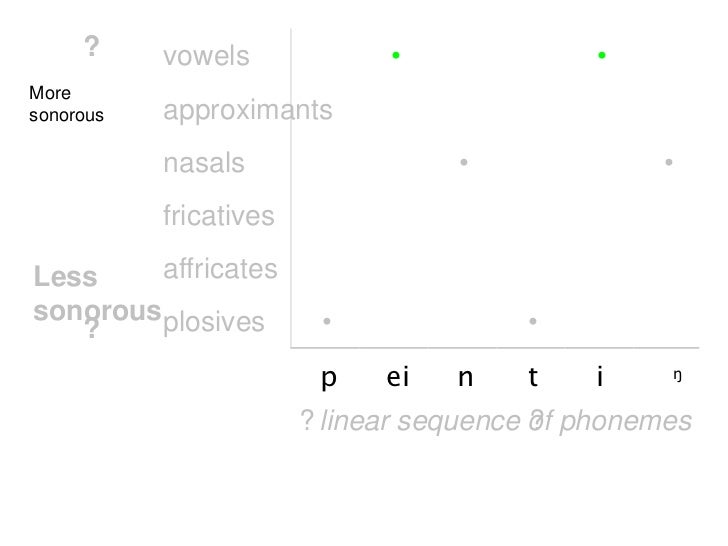

In a matter of just about 36 months, a child typically produces novel sentences that involve complicated constructions, words that reference abstract ideas or absent entities, and sound sequences that mark the distinctive contrasts of the native language. All interesting questions arising from a quick consideration of the sonority hierarchy.Children’s acquisition of language occurs rapidly, with relatively few errors and seemingly without effort. Of course, now we’re getting into questions about what vowels and consonants actually are and whether there is any sharp divide between them. This suggests that consonants must latch onto vowels and cannot really exist in isolation (which seems to be true especially of the least sonorous consonants – try saying a /t/ or a /b/ sound without a following vowel-sound). Perhaps consonants can be considered as ways of beginning and ending a vowel-sound and in clusters they are more vowel-like the nearer they are to the nucleus. Why should syllables generally have this structure? Perhaps it is a way of making the syllable more perceptually salient since each syllable would effectively have its own sonorous peak. Thus the tendency itself is worth explanation. But the tendency is very strong and seems to hold across the world’s languages. The sonority structure of syllables is a tendency, there are numerous exceptions to the idea that sounds in a syllable go from least sonorous to most sonorous to least sonorous. You might think ‘people’ has /pl/ at the end, but here the /l/ is the nucleus of the second syllable and not part of the coda of the first syllable. Note as well that the reversed orders found in the onsets above are not found in coda position. For example, ‘help’ and ‘cart’ (in rhotic English accents) which do show the clusters /lp/ and /rt/ respectively. In coda position, consonants clusters generally decrease in sonority. Note that the reversed order /lp/ and /rt/ are not found in syllable onsets. In onset position, consonant clusters (multiple consonants together) generally increase in sonority (a notable exception to this tendency is /s/). The nucleus is most commonly a vowel (it can also be a consonant such as /l/ or /n/ as in ‘bott le’ or ‘butt on’), and is thus the most sonorous part of the syllable. What is interesting is that cross-linguistically the vast majority of syllables are built around the sonority hierarchy:
SONORITY HIERARCHY CHART FREE
English is quite free in terms of the number of consonants and vowels permitted in a syllable, for example, ‘strengths’ has the structure CCCVCCC. SyllableĬross-linguistically the most common type of syllable is CV, that is an onset-nucleus syllable where the onset consists of one consonant and the nucleus consists of one vowel, and some languages only permit this kind of syllable. For various reasons, the nucleus and coda are considered to form a sub-unit within the syllable called the rhyme. Obligatorily there is a nucleus, and optionally there is an onset (before the nucleus) or a coda (after the nucleus) or both. Syllables are considered to be hierarchical sound structures. by place of articulation, or by frequency of occurrence, so is there anything special about arranging speech sounds in terms of sonority? From the point of view of syllable structure, there is. We could arrange speech sounds in numerous other ways, e.g. So far, there is nothing particularly special about this hierarchy – we’ve chosen sonority as our criterion and made a hierarchy with it. Glides include /j/ and /w/ as in ‘ you’ and ‘ want’ respectively.įricatives include /s/, /z/, /f/ and /v/.Īffricates include /tʃ/ as in ‘ chur ch’.Īlso voiced sounds are more sonorous than voiceless ones so, for example, the voiced fricative /z/ is more sonorous than its voiceless counterpart /s/. Vowels > Glides > Liquids > Nasals > Fricatives > Affricates > Plosives The simplified hierarchy looks like the following with the most sonorous sounds on the left: ɑ/, /e/) whilst voiceless plosive consonants are the least sonorous (e.g. The sonority hierarchy refers the ordering of speech sounds from highest amplitude to lowest amplitude.


 0 kommentar(er)
0 kommentar(er)
